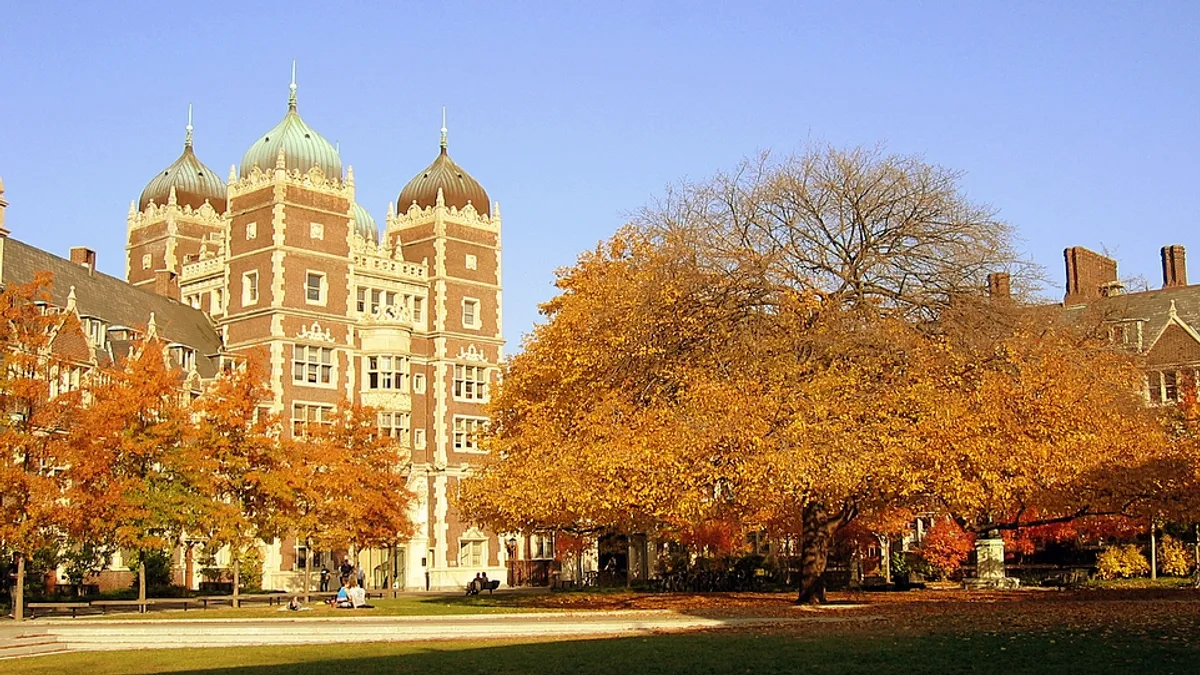“How can higher education be so bad when there’s so much data" from analytics on jobs and earnings data to quality of life indicators, constantly showing all of the positive outcomes associated with a college degree, asked Shaun Harper, Executive Director of the USC Race and Equity Center and a professor of education and business at the University of Southern California.
The question was posed during the Higher Education Government Relations Conference in San Diego Wednesday as a response to a growing partisan divide — and specifically, what seems to be a Republican retreat — on the value of higher education.
“I don’t think it’s that necessarily Republicans hate higher ed and Democrats love it, I think it’s that nobody knows what to do with it,” said Arizona Board of Regents President Eileen Klein.
“Democrats worry about getting [more students] in the door. Republicans worry about what happens when you get in the house and whether you’ll get out the door,” said University System of Maryland Director of Legislative Affairs Andy Clark, who pointed out that many conservatives worry higher education institutions are making students too liberal.
Barbara Damron, Cabinet Secretary of the New Mexico Higher Education Department, said the growing chasm and reports of Republican skepticism have been “a good wake-up call for higher ed,” adding “different pockets of higher education have been stuck in their Ivory Towers” and are failing to keep up with changes to the society and the country’s overall needs, thanks largely to an extreme arrogance of many individuals in the academy, which Damron said has been “a huge deficit for higher ed.”
Harper agreed damaging arrogance is an underlying problem, but said he’s “more frustrated with how people make decisions based on assumptions.” Additionally, Harper suggested the divided perceptions of the impact of higher ed may actually reflect racial divisions more than purely political ones.
Students of color, he said, don’t see their institutions as being these extremely liberal environments. Many find quite the opposite -- their perceptions are that the campuses are conservative, white affirming and unwelcoming of those who don’t come from white, affluent or upper-middle class backgrounds.
“I hear from black and Latino students in particular that they are accused of trampling on the free speech of others when they try to raise consciousness around issues of race,” Harper said.
In a highly polarized political climate in which everyone seems to gravitate towards extremes, Damron underscored the need for higher ed government affairs professionals and other advocates to “be communicating in the middle.”
“We bungle communication on a regular basis,” she said. “We need to do it better.”
Inside Higher Ed’s Scott Jaschik owned that part of the issue is with the media, which plays to the extremes not just on college campuses, but in general.
“Generally in our conversations about higher ed, we focus on the elites … and you constantly get false issues in the end,” he said. Even in the conversation about public institutions, “there are land-grants that want to be like the Ivies, and there are populist land-grants. We in the press tend to focus on the former,” but the “real students” are enrolled in the latter.
“If we don’t deal with free speech on college campuses, we’re screwed,” Damron said, adding, equally important is cleaning up sexual assault and [restoring faith in the value of] science.”
Klein had some advice for those hoping to change the narrative which is that leaders must sit tangential to higher ed, like the tax bill: Don’t change your story based on who you’re talking to, and know who’s in your corner and who isn’t.
“If they’re not for you, don’t spend a whole lot of time on them thinking you’re going to win them over,” she said. “I’m not a ‘squeaky wheel’ kind of person.”
Instead, she suggested focus on building key relationships in advance, so that when an actual need arises, allies will already be sensitive to the institution’s cause.












